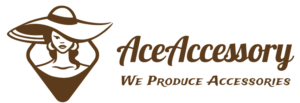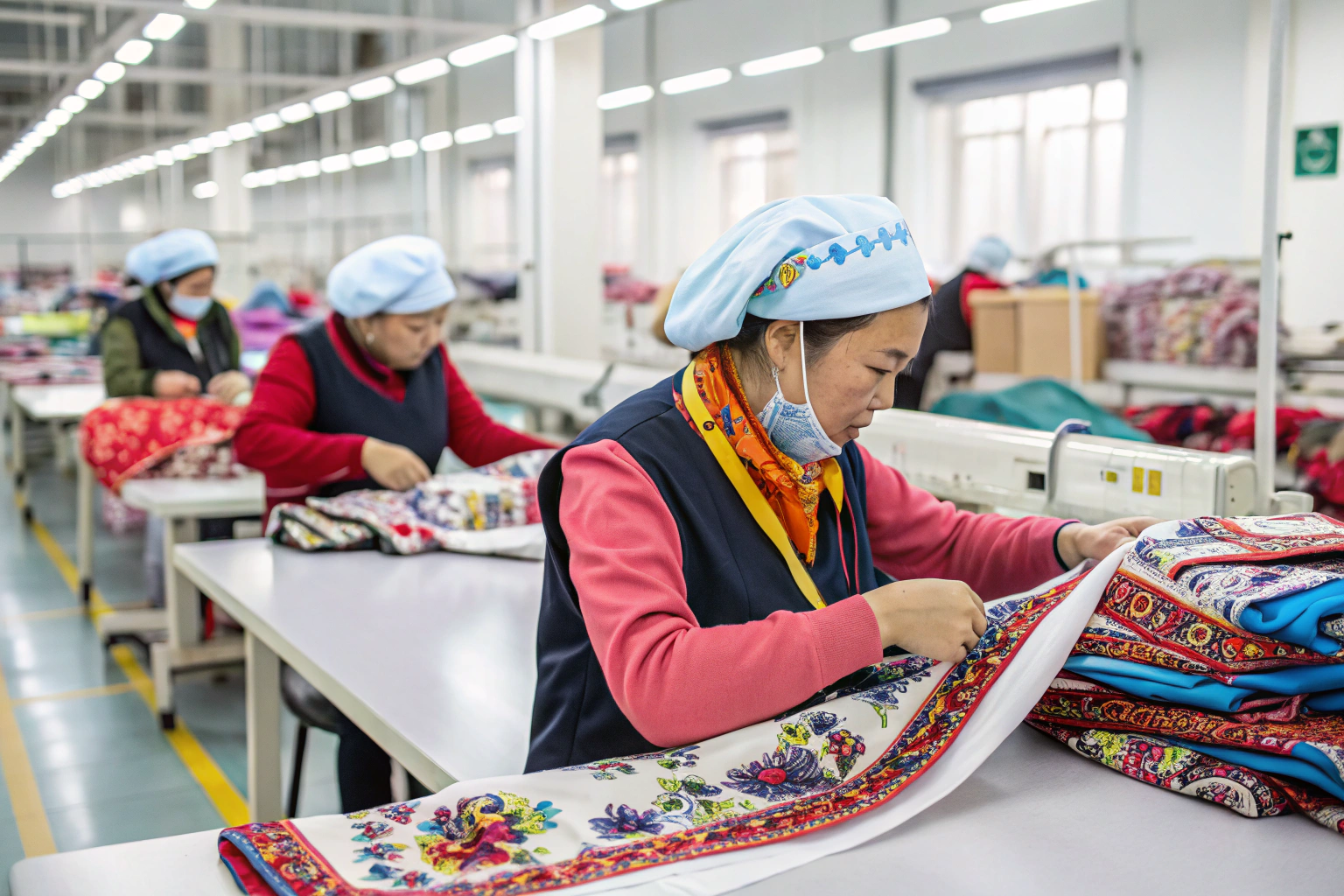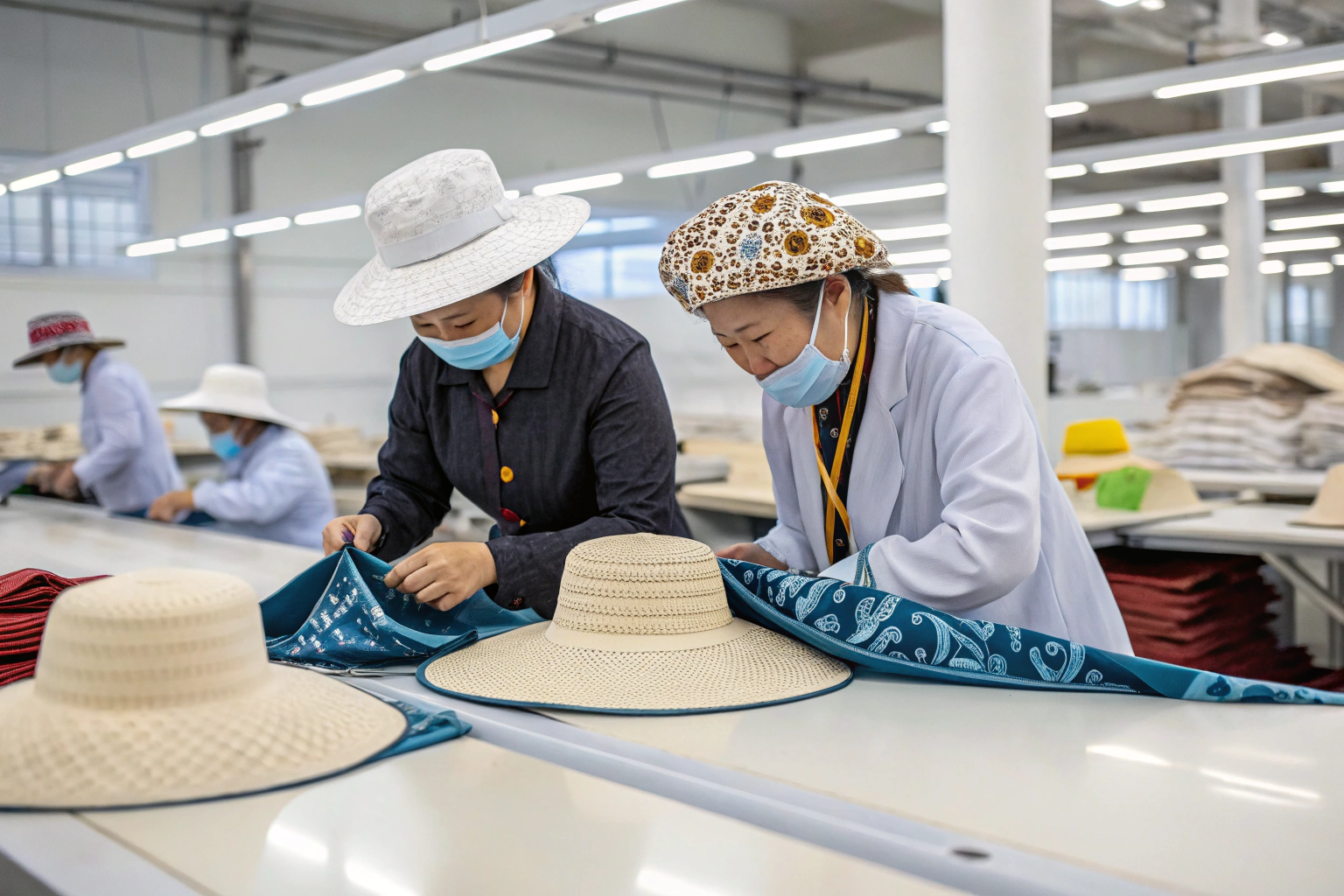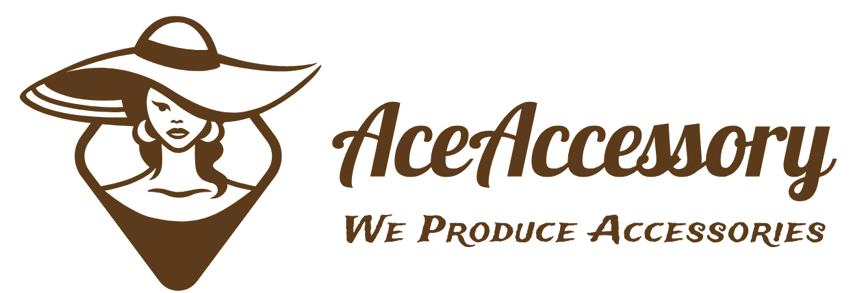Labeling might seem like a small detail—until it becomes the reason your goods are delayed, returned, or pulled from Canadian shelves.
Accessories sold in Canada must meet bilingual labeling rules, country of origin declaration, fiber content disclosure (for textiles), and general consumer product safety labeling requirements.
I’ve helped North American clients import everything from scarves to belts, and I’ve seen how Canadian regulations can trip up even experienced buyers. In this guide, I’ll explain exactly how we make sure every accessory label we produce meets Canadian law.
What are the mandatory labelling requirements in Canada?
Many importers assume U.S. and Canadian label laws are similar. They're not. Canada has its own strict system, and ignoring it can result in penalties or re-labeling fees.
Mandatory labeling in Canada includes bilingual (English and French) language, product identity, dealer identity, and country of origin. Textile products also require fiber content labels.
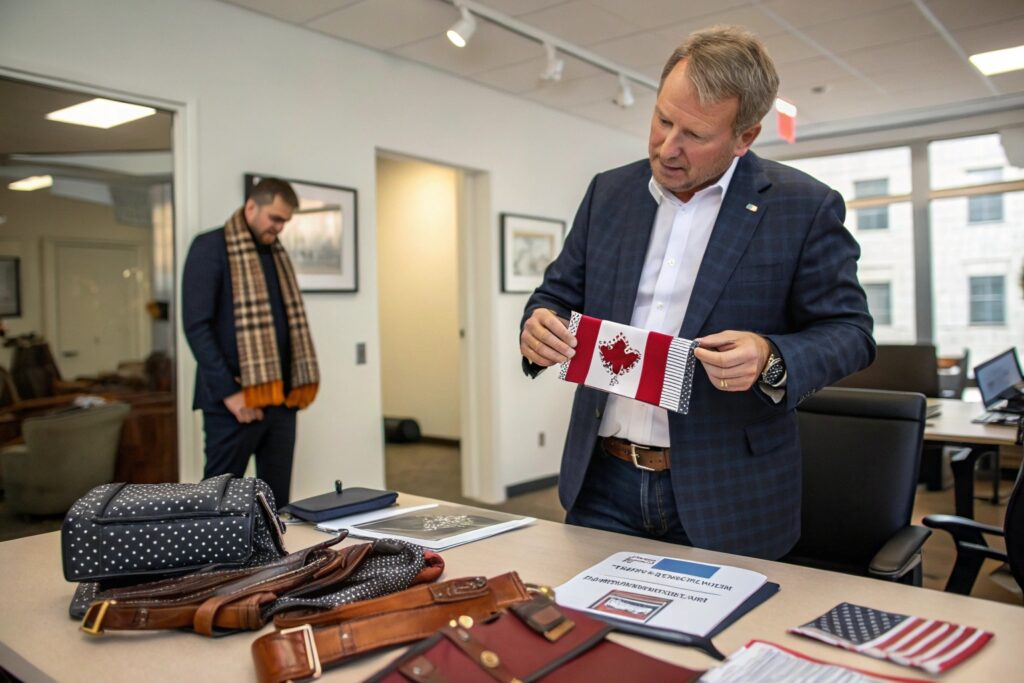
How AceAccessory helps importers meet Canada’s labeling laws without added delays or risk
We’ve worked with Canadian distributors, Amazon FBA sellers, and boutique buyers. Here's how we make sure your labels are ready for customs and shelves:
1. Language Requirements
Labels must be in both English and French. This includes:
- Product name or description
- Fiber content (if textile)
- Country of origin
- Company name and address
We print both languages on every care tag, sticker, and package insert by default for Canadian orders.
2. Product Identity
This is a basic description of the product. For example:
- “Hair Band / Bandeau pour cheveux”
- “Wool Scarf / Écharpe en laine”
3. Dealer Identity
The label must include the company name and address of the Canadian dealer or importer. If our client doesn’t want to show their full info, we assist in registering a CA Identification Number (CA Number).
4. Country of Origin
See more in the section below—but it’s mandatory on most consumer goods.
5. Textile-Specific Rules
For accessories made of fabric (e.g., hats, gloves, scarves), Canada’s Textile Labelling Act requires:
- Exact fiber percentages
- Generic fiber names (e.g., “polyester,” not “fancy fleece”)
- Durably attached labels (e.g., sewn-in or heat-stamped)
| Label Element | Required? | Language | Where Applied |
|---|---|---|---|
| Product Identity | Yes | English & French | Hangtag or package |
| Fiber Content | If textile | English & French | Inside label, tag |
| Country of Origin | Yes | English & French | Tag or outer packaging |
| Dealer Identity | Yes | English & French | Label or printed inside packaging |
We customize labels during production, ensuring they pass inspections from Health Canada and CBSA (Canada Border Services Agency).
What are the minimum requirements for labeling products?
Even if your accessory isn’t made of fabric, Canada still has core rules you need to follow.
The minimum product labeling requirements in Canada include product identity, dealer name and address, country of origin, and bilingual labeling on consumer packaging.
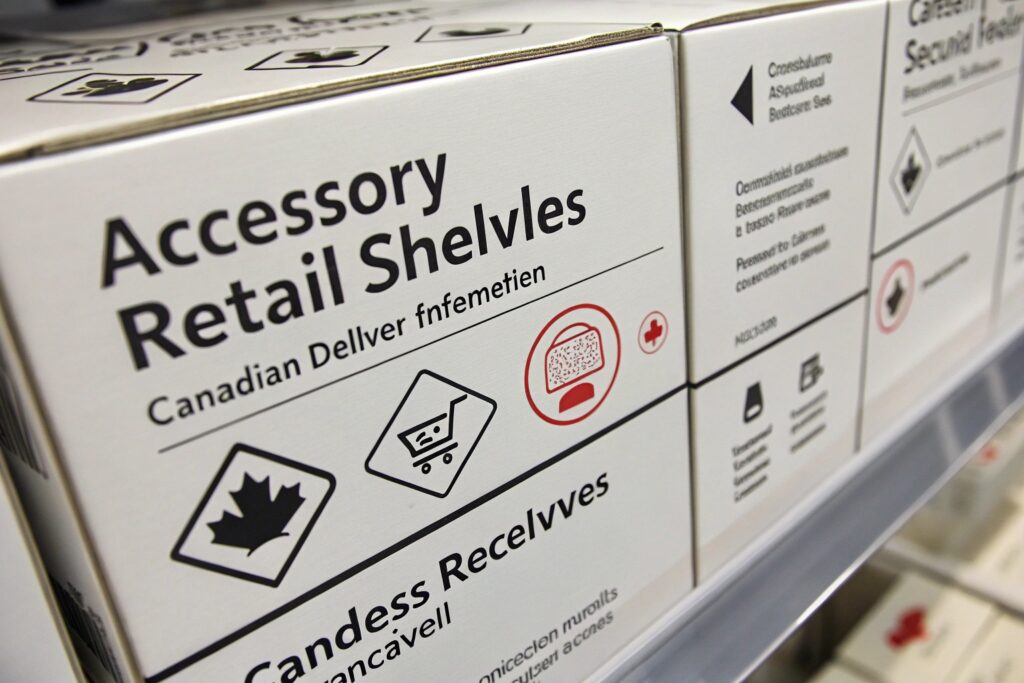
What happens if your accessory doesn’t meet Canadian labeling requirements?
Let me explain through a real case. One of our U.S. clients shipped a batch of PU belts to Canada. The items were labeled only in English, with no importer details. Canadian customs flagged the shipment, and the retailer had to reprint thousands of hangtags at their warehouse—wasting weeks of time and money.
To avoid this, we follow these minimum rules:
1. All Labels Must Be Bilingual
Even non-textile items like plastic hair clips or metal keychains require English and French labeling on packaging and product descriptions.
2. Include the Dealer Name and Address
This can be a registered Canadian distributor, the buyer’s Canadian office, or a CA Number from the Competition Bureau.
3. State the Country of Origin
It must say “Made in China / Fabriqué en Chine” or equivalent. No shortcuts or flags-only symbols are accepted.
4. Use Correct Product Descriptions
No marketing terms or unregulated names like “eco fiber” or “magic stretch.” We use approved generic names that comply with the Competition Bureau’s standards.
| Item Type | Minimum Labeling Elements |
|---|---|
| Hair Clips | Product name, country of origin, dealer info |
| Leather Belt | Material type, “Made in China”, bilingual tag |
| Scarf (textile) | Fiber content, CA number, importer address |
| Winter Gloves | Product ID, origin, fiber composition (if any) |
By default, our labeling system produces compliance-ready designs that can be applied as stickers, sewn-in tags, or printed inserts based on your product’s needs.
What is the country of origin labeling requirement for Canada?
Country of origin may seem obvious—but failing to declare it properly can result in serious customs issues.
Canada requires country of origin labeling for most consumer goods, and it must be clearly visible, truthful, and bilingual.
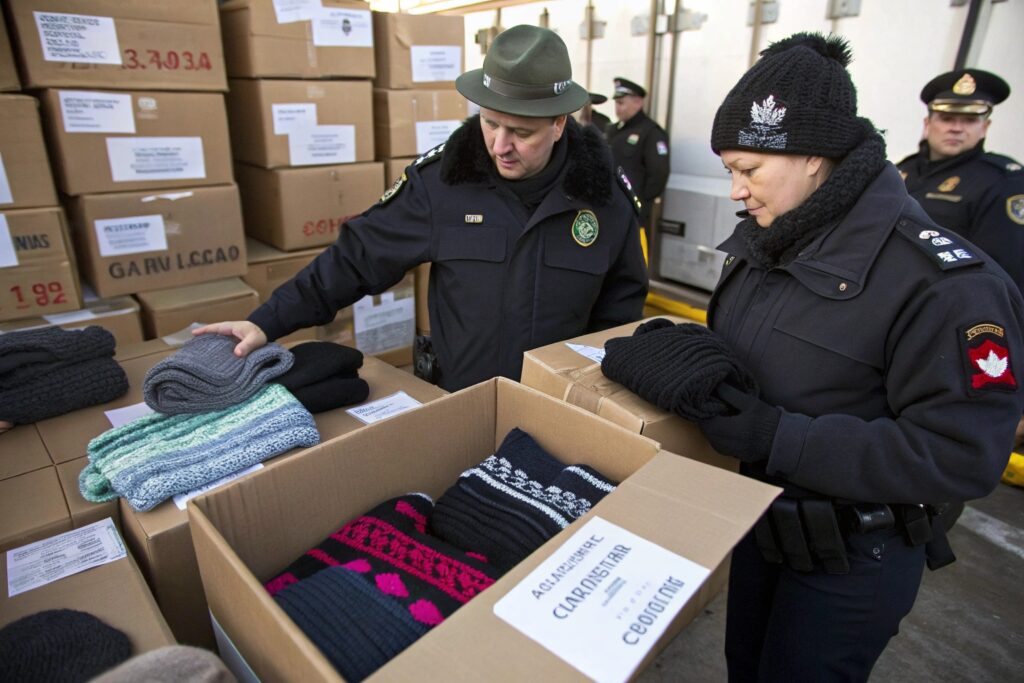
What rules apply to origin marking on accessories imported to Canada?
We’ve helped multiple clients navigate this, especially when importing multi-material or globally sourced goods. Here’s what we’ve learned:
1. Use Full Country Names
Use “Made in China / Fabriqué en Chine” instead of just “China.” Abbreviations like “PRC” are not accepted.
2. It Must Be Prominent
The origin statement must be on the product or packaging in a visible spot—no hiding it in small print inside a box.
3. Mixed-Origin Items
For accessories assembled in more than one country, the key rule is where the last substantial transformation occurred. For example:
- Fabric from Vietnam, sewn in China → “Made in China”
- Buttons added in Canada to imported belts → still “Made in China”
4. Don’t Mislead
Using Canadian symbols or flags on foreign goods is considered misleading if not clearly labeled with the origin.
| Labeling Rule | Requirement |
|---|---|
| Country Name | Must use “Made in [Country]” format in both languages |
| Label Placement | Clearly visible on packaging or product tag |
| Multiple Country Inputs | Declare based on last substantial transformation |
| Misleading Symbols | Prohibited unless paired with correct country origin |
We apply this rule to every accessory type—scarves, gloves, hats, and even gift sets—to ensure seamless customs clearance.
What is the consumer packaging Labeling Act in Canada?
Beyond product labels, even the external packaging must follow Canadian rules. That includes boxes, pouches, and inserts.
The Consumer Packaging and Labelling Act (CPLA) requires accurate product descriptions, dealer identity, and bilingual labeling for all pre-packaged consumer goods in Canada.
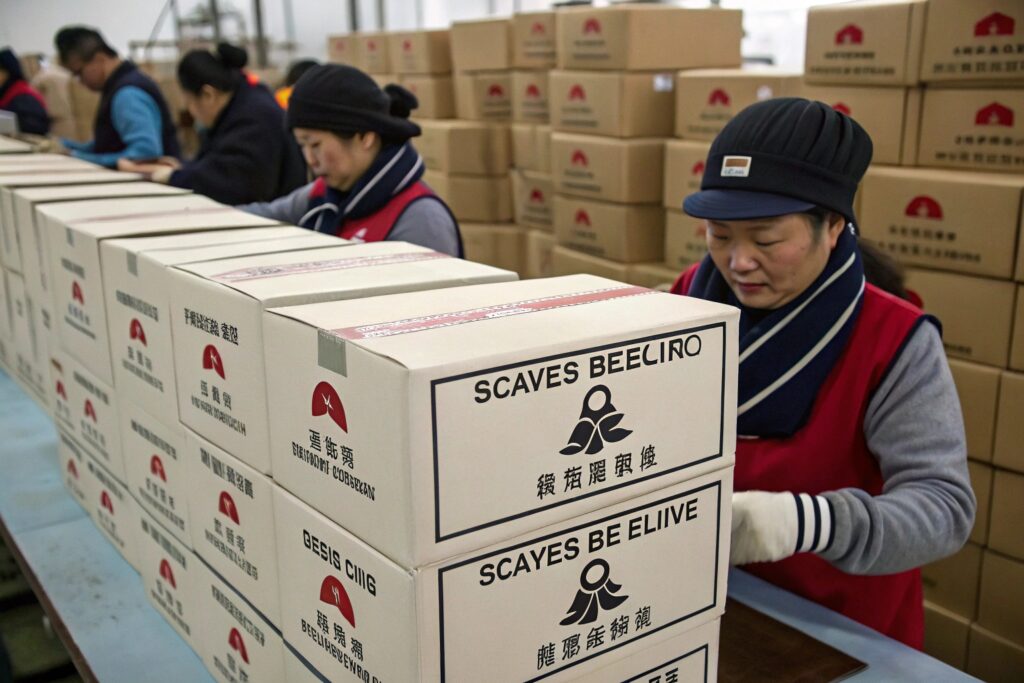
What packaging elements must be labeled under Canadian law?
This law affects all imported products sold directly to consumers. We follow these packaging rules during production to avoid customs issues:
1. Bilingual Labeling
All outer packaging must have French and English descriptions of the product and its quantity. For example:
- “2-pack hair clips / Paquet de 2 pinces à cheveux”
- “1 leather belt / 1 ceinture en cuir”
2. Net Quantity
This must be declared using metric units where applicable. Even if your item is counted by pieces, include:
- “Contenu: 1 pièce / Contents: 1 piece”
3. Dealer Identity
Same as on the product label—must include a name and contact info or CA Number.
4. Non-Deceptive Labeling
The label must not exaggerate the size, contents, or material. For example, you can’t say “pure leather” if it’s bonded leather.
| Packaging Rule | Application |
|---|---|
| Language | All labels must be in English and French |
| Quantity Declaration | Must show number of items or metric quantity |
| Dealer Information | Required on every box or pouch |
| Honest Marketing Claims | Avoid superlatives without verification |
A Toronto-based retailer once faced delays because their winter accessory gift set had packaging in English only. We redesigned their label with proper French translations and dealer info, and their next shipment passed without issue.
Conclusion
Selling accessories in Canada isn’t just about great products—it’s about meeting every labeling requirement, from language to content to origin. At AceAccessory, we handle the entire compliance process, so you can sell with confidence.
